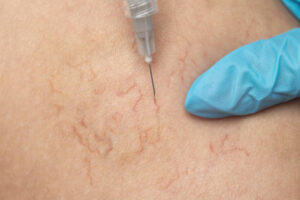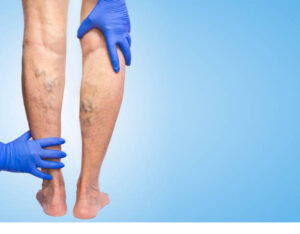What is Reflux Vein Disease?
At Fox Vein & Laser Experts, a leader in treating vascular diseases of all kinds, we see a lot of patients suffering from reflux vein disease.
Like any form of reflux, reflux vein disease can be uncomfortable. The key is to not only treat veins effectively but to take steps to avoid being diagnosed with this disease in the first place.
 Venous reflux, another term for chronic venous insufficiency, refers to a condition affecting the veins in the lower extremities. This kind of insufficiency occurs when valves stop functioning appropriately and blood flow in the leg reverses. When the valves in the veins of the legs do not effectively move blood flood back to the heart, pressure and swelling occur.
Venous reflux, another term for chronic venous insufficiency, refers to a condition affecting the veins in the lower extremities. This kind of insufficiency occurs when valves stop functioning appropriately and blood flow in the leg reverses. When the valves in the veins of the legs do not effectively move blood flood back to the heart, pressure and swelling occur.
Hence, venous reflux.
“At Fox Vein & Laser Experts, we see patients suffering from chronic venous insufficiency daily. More often than not, patients wait until they are deeply uncomfortable instead of coming to visit us at the first sight of any swelling or discoloration,” Dr. Susan Fox says.
Is early intervention important? Absolutely.
Here’s how you know that chronic venous insufficiency, or venous reflux, is affecting you:
1) Persistent swelling of the lower legs
2) Leg Pain, dull aching, heaviness, or cramping.
3) Bluish discoloration of the skin at the ankles.
4) With prolonged swelling, venous ulcers can develop at the ankles and these often become infected
What causes Venous Reflux or Chronic Venous Insufficiency?
1) Weight: Being overweight is a leading cause of venous disease
2) Pregnancy: Venous complications are common during and after pregnancy
3) Smoking: People who smoke compromise the health of their veins
4) Standing or sitting for long periods of time: This affects blood flow
5) Not enough exercise: Getting your blood pumping through cardiovascular exercise is critical
6) Family History: If your mother, father, or grandparents had varicose veins, you should be on the lookout for any changes in the skin of your lower extremities.
How do we diagnose Venous Insufficiency?
CVI or venous diseases are not difficult to diagnose. If you are presenting with any of the above signs and symptoms, we are going to look a bit deeper to see what is happening with your veins. One common way to properly diagnose a patient with chronic venous insufficiency is through ultrasound.
A ‘Duplex Ultrasound,’ according to the University of California San Francisco, is a type of vascular ultrasound designed to assess blood flow and the structure of leg veins. “The term “duplex” refers to two modes of ultrasound: Doppler and B-mode. The B-mode transducer (like a microphone) obtains an image of the blood vessel of interest. The Doppler probe within the transducer measures the velocity and direction of blood flow within the vessel.”
 Our goal in catching and diagnosing any form of venous insufficiency is to treat and stop it from becoming something more serious and unmanageable. For example, venous ulcers. Venous ulcers are incredibly painful and dangerous and are a by-product of untreated venous disease. These ulcers are exactly what they sound like – open sores in the skin due to malfunctioning venous valves. They form where blood pools and swelling occurs, eventually forming an ulcer more commonly near the ankles. Venous ulcers are so dangerous, in fact, that if left untreated they can lead to serious infection and the need to amputate.
Our goal in catching and diagnosing any form of venous insufficiency is to treat and stop it from becoming something more serious and unmanageable. For example, venous ulcers. Venous ulcers are incredibly painful and dangerous and are a by-product of untreated venous disease. These ulcers are exactly what they sound like – open sores in the skin due to malfunctioning venous valves. They form where blood pools and swelling occurs, eventually forming an ulcer more commonly near the ankles. Venous ulcers are so dangerous, in fact, that if left untreated they can lead to serious infection and the need to amputate.
How can you manage Venous Discomfort in-between visits?
2) Elevating the legs when not standing
3) Exercise
Contact us at Fox Vein & Laser Experts
For all of your Miami vein treatment needs, we’re here for you. At Fox Vein & Laser Experts located just west of Fort Lauderdale, we’re here to make sure you treat your vascular issues appropriately and remain healthy for a long, long time.

